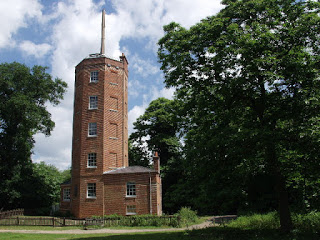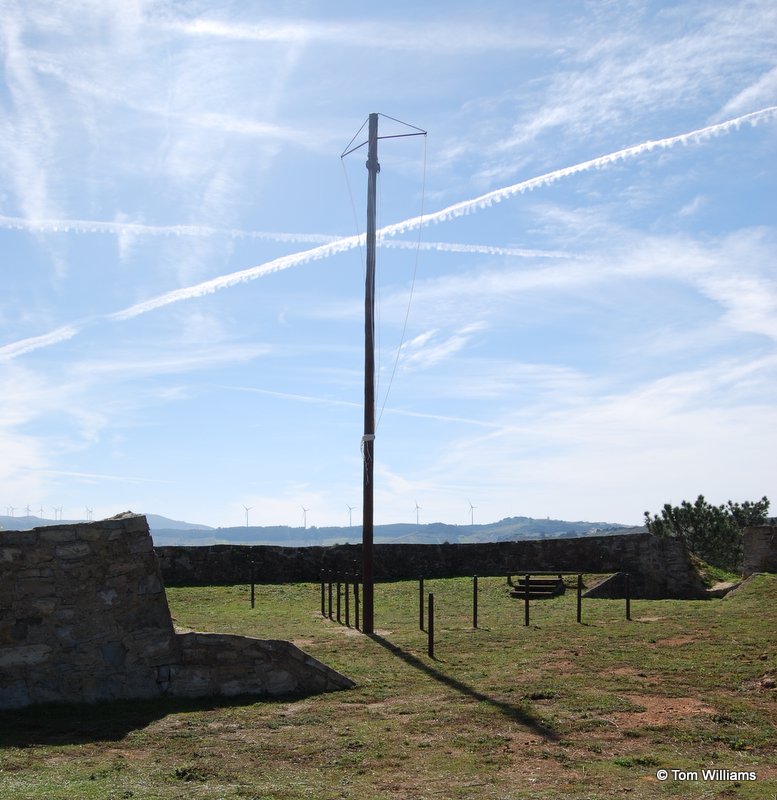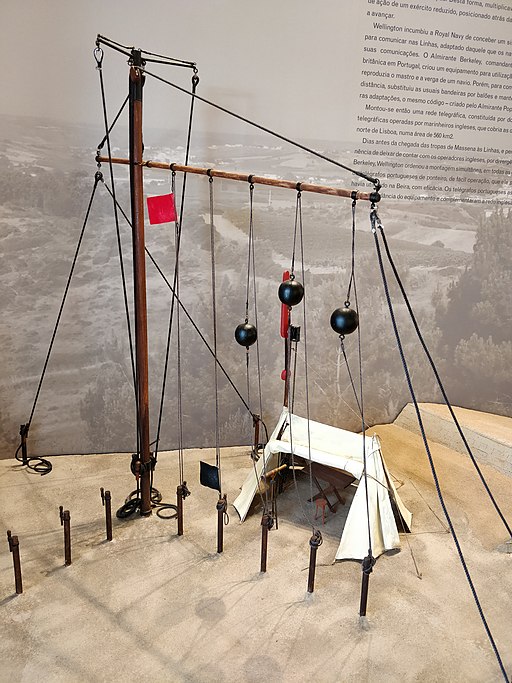There’s a sort of game that historians play on Twitter. They keep track of the number of their followers by looking at events in the corresponding year. So yesterday my account (@TomCW99) racked up 1684 followers and I got quite excited because 1684 was the year that Robert Hooke invented the semaphore line.
Semaphores crop up in a couple of my books (or at least in the research I did for them).
I first came across a reference to semaphores when I was researching Napoleon’s escape from Elba. One of the French king’s bodyguards, Col Marie Antoine de Reiset wrote in his journal:
An astounding piece of news arrived yesterday. We learnt, by Telegraph, that Bonaparte had landed at Cannes, near Frejus.
The apparent anachronism is explained by the absence of the word ‘electric’ before ‘telegraph’. A check in the trusty Complete Oxford Dictionary (invaluable for historical novelists) gives the original meaning of the word ‘telegraph’ as: “An apparatus for transmitting messages to a distance, usually by signs of some kind.”
This was the idea that Hooke had presented to the Royal Society in 1684. He had intended it for military use, but his ideas were never put into practice. As so often nowadays, an idea that had been invented in Britain was left for another country to develop. Embarrassingly (given that we were about to go to war with them) the nation that did finally produce a workable semaphore system for military use was the French. In 1792, the engineer Claude Chappe developed the first successful optical telegraph. Eventually he and his brothers succeeded in covering France with a network of 556 stations stretching a total distance of 3,000 miles.
The British, though, were not far behind.
In Britain, semaphore was used to communicate between London and the fleet. (Note that the English tend to prefer the word ‘semaphore’ to ‘telegraph’ but they are the same thing.) Lines of semaphore towers were constructed. The first ran from London to Deal, Chatham and Sheerness and they were completed by the end of January 1796. The system was judged a great success – signals were said to have travelled from Dover to London, via Deal, in less than seven minutes. A line to Portsmouth, the home of the Navy, was completed in August 1796.

Semaphore can actually prove a remarkably efficient means of communication. Because of the importance of accurate time-keeping in navigation, it was important that the fleet had access to a reliable time signal and semaphore was used to mark the time at which the Time Ball was dropped at the Greenwich Observatory (marking one o’clock). By 1806, the semaphore line had been extended to Plymouth and the one o’clock signal was sent to the port there and acknowledged back to London in three minutes, an impressive achievement for a round trip of four hundred miles.
Meanwhile, in Portugal, the British were using a system of telegraphs developed by Sir Home Popham to communicate along their defensive forts in the lines of Torres Vedras (which will feature in a future James Burke book). Semaphore masts were installed at key points along the line s. The one shown here is a replica at Fort San Vicente.

The horizontal arms on the mast standing there today are not really long enough. When this was rigged up and working the arm would have stretched out as far as the five posts at the bottom. Ropes would have run from the arm to each of the five posts and balls mounted on these ropes would have carried the message. A model in the museum at the fort shows how it would have been set up.

The shorter arms on the modern reproduction are probably wise. There were problems with the original masts which could not bear the weight of the arms and which had to be replaced.
The system allows the masts to transmit one number at a time from one to 999. Each number corresponded to a word in a codebook enabling vital military messages to be transmitted very quickly. Anybody could see the signals but without the codebook they were meaningless.
Popham (never a man to fail to promote one of his ideas) convinced the Admiralty that his system was an improvement on the one they were using and, after trials with an experimental semaphore line between the Admiralty and Chatham in 1816, and its success helped to confirm the choice, Popham’s system was adopted.
The semaphore system was envisaged as a war-time measure, to be abandoned after the defeat of Napoleon and, indeed, it was run down as soon as he was sent to Elba. Napoleon’s escape, though, led to the system being restored to full effectiveness and it was then kept running until it was superseded by the electric telegraph.
The new-fangled electric telegraph had just started operating in India in 1857, just in time to feature briefly in my book about the Mutiny, Cawnpore. It was telegraph messages that warned the British as soon as the uprising started (the operator who sent the first message was killed for his pains) and without it, events may well have turned out differently and Cawnpore might have had a very different ending.
Acknowledgements
Photo credit: “Chatley Heath Semaphore Tower – geograph.org.uk – 18673” by Nigel Richardson. Licensed under CC BY-SA 2.0 via Wikimedia Commons – http://commons.wikimedia.org/wiki/File:Chatley_Heath_Semaphore_Tower_-_geograph.org.uk_-_18673.jpg#/media/File:Chatley_Heath_Semaphore_Tower_-_geograph.org.uk_-_18673.jpg
The photograph of the model of the semaphore in use was taken by Roundtheworld and is licensed under Creative Commons Attribution-Share Alike 4.0 International.
A Word from Our Sponsor
If things like the way that semaphore was used in the Napoleonic Wars catch your interest, you might well enjoy my books about the adventures of James Burke. You won’t come across Popham’s telegraph just yet (the latest book features the battle of Talavera and Wellington’s retreat behind the lines of Torres Vedras, complete with semaphore masts, has yet to take place). You will, though, find a lot of other incidental detail about life at the time. All the James Burke books are available on Amazon both as e-books and in paperback. You can read more details about them on this website: click on ‘My books’ at the top of the page.
Cawnpore and the other books set in the age of the electric telegraph are currently unavailable. They will be republished over the summer.
